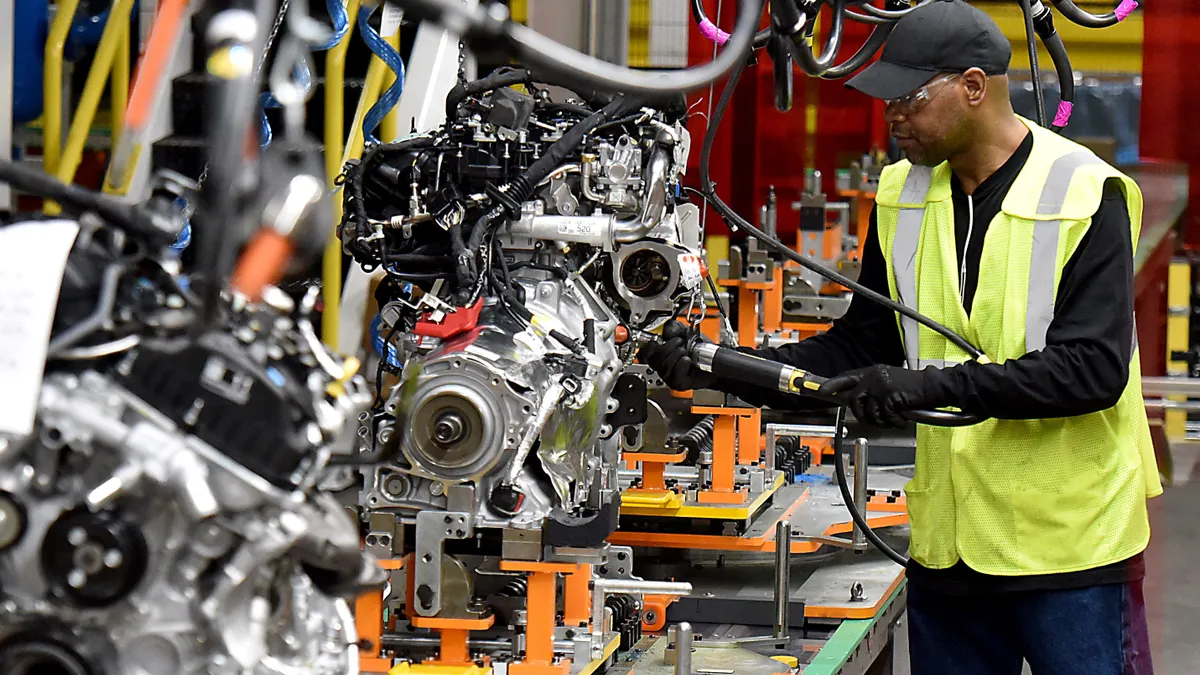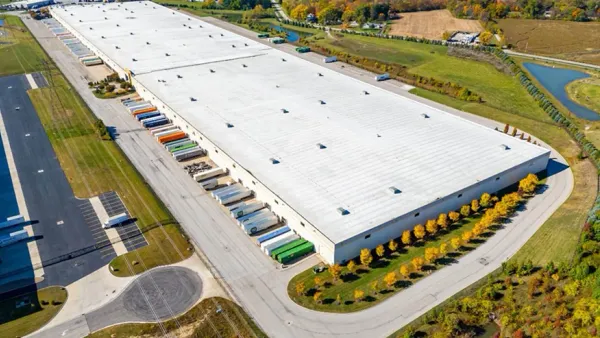Dive Brief:
- The Institute for Supply Management's (ISM) manufacturing index fell to 47.2% in December, down from 48.1% in November.
- The December measure is the lowest reading on the index since June 2009 when it was at 46.3%. When the index falls below 50% it indicates the manufacturing sector is contracting, according to ISM.
- "Global trade remains the most significant cross-industry issue, but there are signs that several industry sectors will improve as a result of the phase-one trade agreement between the U.S. and China," Timothy R. Fiore, chair of the Institute for Supply Management Manufacturing Business Survey Committee, said in a statement.
Dive Insight:
December 2019 was the fifth straight month in which the ISM manufacturing index contracted. Demand, measured by ISM's new orders index, also continues to slump as it sank to 46.8% in December from 47.2% in November.
ISM surveys multiple companies as part of its monthly index report. One company in the food and beverage sector said it was, "Starting to see suppliers try to pass on costs associated with tariffs. Uncertainty on the trade front continues to keep agricultural markets on the defensive."
A recent report by the Federal Reserve Board noted the tariff increases implemented by President Donald Trump were meant "to boost the U.S. manufacturing sector by protecting against what were deemed to be the unfair trade practices of trading partners, principally China." But the board's research led it to conclude tariffs "have not led to increased activity in the U.S. manufacturing sector." It found the tariffs were responsible for reductions in manufacturing employment and increases in producer pricing.
Fiore suggested some industries will benefit from the phase one trade agreement between the U.S. and China but didn't specify which industries and how they would benefit. "Among the six big industry sectors, Food, Beverage & Tobacco Products remains the strongest, while Transportation Equipment is the weakest," he said.
Still, signs of a U.S.-China trade deal appeared in early December and demand was still down for the month. Trump said last week the agreement would be signed on Jan. 15.














